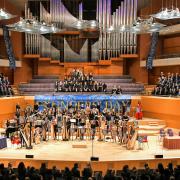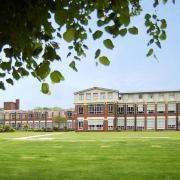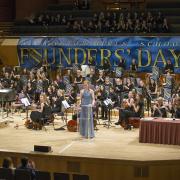The future is uncertain for one of the Wirral's most iconic school buildings, as Chris Hogg reports
The corridors at one of Cheshire’s most iconic schools have fallen quiet. The classrooms are still and the dorms no longer echo with sound of children’s voices.
Mostyn House School’s iconic building, which dominates a stretch along the Parkgate front, closed last July - not just for a brief summer break, the historic school had closed for good.
Many items from the school have been sold at auction and today the black and white building stands empty, its future uncertain.
In Georgian times, when Parkgate was a busy passenger port, the school site belonged to the Mostyn Arms public house and hotel, but as the River Dee continued to silt up the port’s significance declined. By the mid-1800s the salt marshes that dominate Parkgate today had already expanded across the front and the Mostyn Arms finally closed in 1855.
In the wake of this change a school was established, but it wasn’t until the wealthy Grenfell family arrived and took control in 1863, that Mostyn House’s story really started. Reverend Algernon Sidney Grenfell was the first in the long line of Grenfells to run the school, right up until its closure.
The Reverend had several children, including Algernon George and Wilfred, and while Wilfred went on to become famous for his role as a medical missionary in Newfoundland and Labrador, his brother Algernon George remained at Mostyn House, eventually taking over after his father’s suicide in 1887.
Algernon George was instrumental in developing and expanding his father’s school and Mostyn House became one of Cheshire’s leading independent schools.
John Gimlette, now a barrister and critically acclaimed travel-writer, was a boarding pupil at the school between 1971 and 1975. In his book, Theatre of Fish, he writes about his time at the Parkgate school and he said: ‘It was a very eccentric school, but pleasantly so.
‘There was a great history there and in many ways Mostyn House was quite old fashioned and full of the Victorian ideals of education. The conditions were quite hard too, I remember there were up to 20 sleeping in a dormitory.’
He confirmed that the Grenfell’s presence could be felt throughout Mostyn House, even in the 1970s. ‘Mostyn House was the Grenfells,’ he added. ‘It was built in their legacy and the place only had a small number of headmasters, all of which were Grenfells.
‘By and large my memories of my time there are positive ones. I was up during the weekend of the sale to have a look around and there were a lot of former pupils as well as local people. Clearly, there’s a real affection for the school.’
The auction - which took place late last year and included pieces of furniture and school trophies, for rugby, football and even one for ‘best loser’ - was a great success and Caroline Lane, Bonhams’ sales coordinator, said: ‘It was a brilliant day. I hope we did the school justice.’
But despite this success, the future of the iconic building remains uncertain. The Grenfell family are expected to be working with Cheshire West and Chester Council’s planning department when considering the site’s future, but no decisions have yet been taken.
John, meanwhile, remains philosophical about the end of an era. ‘The site was many things before the school came along and it will be many things in the future, I’m sure. It would be nice to see it become a hotel though.’
Were you a Mostyn House pupil?
What would you like to happen to the building?
Leave a comment below or send your ideas and memories of the school to letters@cheshirelife.co.uk, write to Features, Cheshire Life, 3 Tustin Court, Port Way, Preston, PR2 2YQ


























